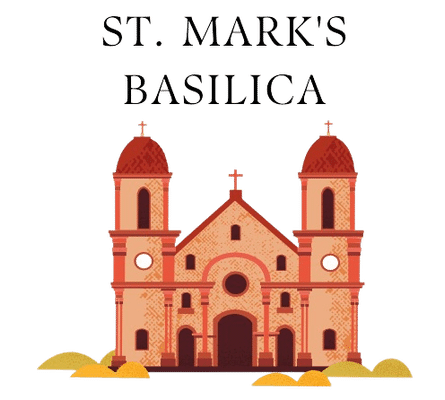St. Mark’s Basilica Entrances
The Northern Entrance of St. Mark's Basilica is the oldest and most understated of the three entrances. Dating back to the 12th century, it features a simple portal with a rounded arch and is decorated with sculptures and decorative elements in the Romanesque style. The North Entrance served as the main entrance to the basilica until the construction of the Porta della Carta.
The Porta della Carta is the most important entrance of St. Mark's Basilica and served as the ceremonial gateway to the Doge's Palace and the Piazza San Marco. Built in the 15th century, it features a striking Gothic design with a pointed arch, intricate carvings, and an ornate portal. The entrance takes its name from the nearby "carta" (paper) office where public announcements were made.
The West Entrance of St. Mark's Basilica was designed by Jacopo Sansovino in the 16th century and has a classical design with a triangular pediment and fluted columns. It is an example of the Renaissance style and reflects the cultural influences of Venice. The entrance is also known as the "Porta della Zecca" because it was once the entrance to the mint (zecca) of Venice.
Architecture of St. Mark’s Basilica Entrances
The architecture of St. Mark's Basilica entrances is a fusion of different styles and influences that reflects the rich history and cultural heritage of Venice. The North Entrance, or the Porta dei Fiori, has a simple Romanesque design with a rounded arch and three carved marble reliefs above the door. The reliefs depict floral motifs and figures of animals.
The Porta della Carta, the most important entrance of St. Mark's Basilica, is a masterpiece of Gothic architecture. It has intricate decorations and carvings, including sculptures of saints, doges, and biblical scenes. The Gothic design of the entrance is characterized by pointed arches, ornamental pinnacles, and spires. The West Entrance, or the Porta della Zecca, is an example of Renaissance architecture. It has a classical design with pilasters, pediments, and a triangular tympanum. The entrance also features sculptures and reliefs depicting scenes from Venetian history and mythology. the St. Mark's Basilica entrances showcase the evolution of architectural styles in Venice and represent a unique blend of Byzantine, Gothic, Renaissance, and Baroque influences.
History of St. Mark's Basilica Entrances
The entrances of St. Mark's Basilica have a rich history dating back to the 12th century. The North Entrance, the oldest of the three, served as the main entrance to the basilica until the construction of the Porta della Carta in the 15th century. The North Entrance features a simple portal with a rounded arch and is decorated with sculptures and decorative elements in the Romanesque style.
The Porta della Carta is the most important entrance of St. Mark's Basilica and served as the ceremonial gateway to the Doge's Palace and the Piazza San Marco. Built in the 15th century, it features a striking Gothic design with a pointed arch, intricate carvings, and an ornate portal. The entrance takes its name from the nearby "carta" (paper) office where public announcements were made.
The West Entrance of St. Mark's Basilica was designed by Jacopo Sansovino in the 16th century and has a classical design with a triangular pediment and fluted columns. It is an example of the Renaissance style and reflects the cultural influences of Venice. The entrance is also known as the "Porta della Zecca" because it was once the entrance to the mint (zecca) of Venice. Over the centuries, the St. Mark's Basilica entrances have been renovated and restored, but they continue to serve as important cultural and architectural landmarks of Venice. Each entrance tells its own unique story and offers a glimpse into the history and artistic heritage of this iconic building.
FAQ's
Are the entrances open to the public?
Yes, the St. Mark's Basilica entrances are open to the public for viewing and entrance to the basilica. However, visitors must adhere to strict dress codes and follow rules regarding photography and filming.
What architectural styles are represented in these entrances?
The St. Mark's Basilica entrances feature various architectural styles, including Gothic, Venetian Gothic, and Renaissance.
What is the historical significance of these entrances?
The St. Mark's Basilica entrances are important landmarks that reflect the diverse architectural styles and cultural influences that have shaped Venice over the centuries.
Are there any restrictions on photography or filming inside the St. Mark's Basilica?
Yes, visitors are not allowed to take photographs or film inside the St. Mark's Basilica entrances or the basilica's interior.
What is the dress code for visiting the St. Mark's Basilica entrances?
There is no strict dress code in St. Mark's Basilica but visitors to the St. Mark's Basilica entrances must dress modestly and cover their shoulders and knees. Hats must also be removed inside the entrances.
what are the st mark's basilica opening hours
The opening hours for St. Mark's Basilica in Venice may vary depending on the season and special circumstances. It's advisable to check the official website or contact the basilica directly for the most up-to-date information regarding their hours of operation.

